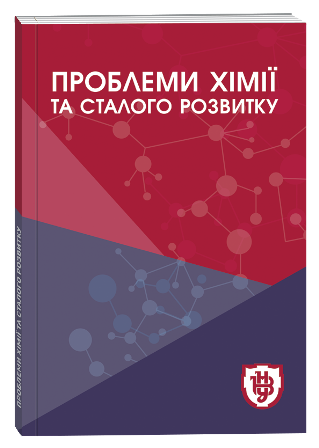WATER QUALITY MONITORING OF SOME SMALL RIVERS OF RECREATIONAL ZONES OF TRANSCARPATHIA
DOI:
https://doi.org/10.32782/pcsd-2021-3-7Keywords:
recreational zones, Transcarpathia, monitoring, water quality, small riversAbstract
The aim of the study. Water quality of small mountain rivers Bradolets, Sukhar, Synyavka, Vyshka, Velyka Uholka, Bronka, Repinka, Matekova was monitored. One of the features of these rivers is that they flow along the recreational areas of Transcarpathia with a special protection status: national nature parks “Synevyr”, “Enchanted Land”, “Uzhansky”, regional nature park “Sinyak”, Ugolsko-Shirokoluzhansky reserve massif, ichthyological reserve “Rich”, ski resort Pylypets. On the banks of the small rivers that are researched there are various recreational complexes (hotels, restaurants, private estates, trout farms, recreation centers, guest houses), the activities of which can negatively affect the quality of water in watercourses. The latter are known to be vulnerable to any anthropogenic impacts on the catchment area and act as indicators of changes in the ecological condition of the territories. Methodology. Post-seasonal monitoring of water quality of these rivers in the recreational zones of Transcarpathia was carried out according to some hydrophysical (transparency, odor, color) and hydrochemical (biochemical oxygen consumption, alkalinity, dissolved oxygen content, permanganate oxidation, ammonium nitrons, nitrons, ions phosphates), total iron and cations of some metals) indicators. The assessment of anthropogenic impact of these surface watercourses on water quality was carried out in space and time – ie along the entire length of rivers at two selected points (1 – river source, 2 – place of confluence with another river) during 2019–2021, including all Periods of the year. Scientific novelty. The results of monitoring experimental researches of hydrophysical parameters of water of small rivers Bradolets, Suhar, Synyavka, Vyshka, Velyka Uholka, Bronka, Repinka and Matekova show positive dynamics in terms of water quality of the latter during 2019–2021. It should be noted that the defined indicators of water transparency, odor and color do not exceed the normalized values, and their values did not change significantly seasonally and over time, which indicates minimal anthropogenic impact and natural self-recovery of water in these rivers. Transparency ranges from 30–27 cm, odor – less than 2, color – 5–15 degrees. Analysis of monitoring data on the ecological status of natural water of small rivers in the recreational areas of Transcarpathia shows that the water quality of the latter does not fluctuate significantly in different phases of the water regime and periods of the year. The normalized indicators that characterize the quality of surface waters do not exceed the maximum allowable concentrations for fishery waters, which indicates the first class and 1–2 category of water quality. Exceedance of the normalized values is observed only for the indicator of total iron (2–4 times) and manganese (5 times), because of the peculiarity of the geological province of Transcarpathia. Conclusions. Monitoring of water quality of some mountain streams of Transcarpathia proved the positive dynamics of their functioning, proper water quality of mountain rivers in recreational areas of the region. Furthermore it allows to make assumption about the ability of river to self-purification and about the low anthropogenic impact on this water.
References
Доповідь про стан навколишнього середовища Закарпатської області за 2018 р. / Департамент екології природних ресурсів. Ужгород, 2019. С. 158.
Проблеми басейнів малих річок / О. Нестерова та ін. Вісник Придніпровської державної академії будівництва та архітектури. 2019. № 5. С. 257–258. DOI: 10.30838/J.BPSACEA.2312.221019.68.524.
Хоменко О., Гайдар І. Аналіз екологічного стану малих річок Черкаської області (на прикладі р. Золотоношка). Екологічна безпека. 2010. № 2 (10). С. 39–42.
Cybriwsky R. Along Ukraine’s River: A Social and Environmental History of the Dnipro. Budapest : Central European University Press, 2018. P. 280.
Krelshteyn P., Dubnytska M. Kyiv small Rivers in Metropolis Water Objects System. Annals of the Photogrammetry, Remote Sensing and Spatial Information Sciences. 2017. No. IV–5 (1). P. 23–27. DOI: 10.5194/isprs-annals-IV-5-W1-23-2017.
Оцінка екологічного стану поверхневих вод малих річок басейну р. Західний Буг за рівнем забрудненості (на прикладі р. Гапа) / А. Яцик та ін. Вісник аграрної науки. 2020. № 1 (802). С. 75–80. DOI: 10.31073/agrovisnyk202001-11.
Нетробчук І. Прогноз якості води в річках Волинської області. Географія. 2010. № 7. С. 65–71.
Вовкунович М., Роман Л., Чундак С. Антропогенна діяльність на території НПП «Сколівські Бескиди» та її вплив на екологічний стан гідромережі. Науковий вісник Ужгородського університету. Серія «Хімія». 2020. № 1 (43). С. 86–91. DOI: 10.24144/2414-0260.2020.1.86-91.
Аналітична хімія поверхневих вод / Б. Набиванець та ін. Київ : Наукова думка, 2006. С. 456.
Гранично допустимі концентрації показників якості води для рибогосподарських водойм. Загальний перелік ГДК і ОБР шкідливих речовин для вод рибогосподарських водойм : список № 12-04-11. Київ : Міністерство рибного господарства СРСР, 1990. С. 45.







